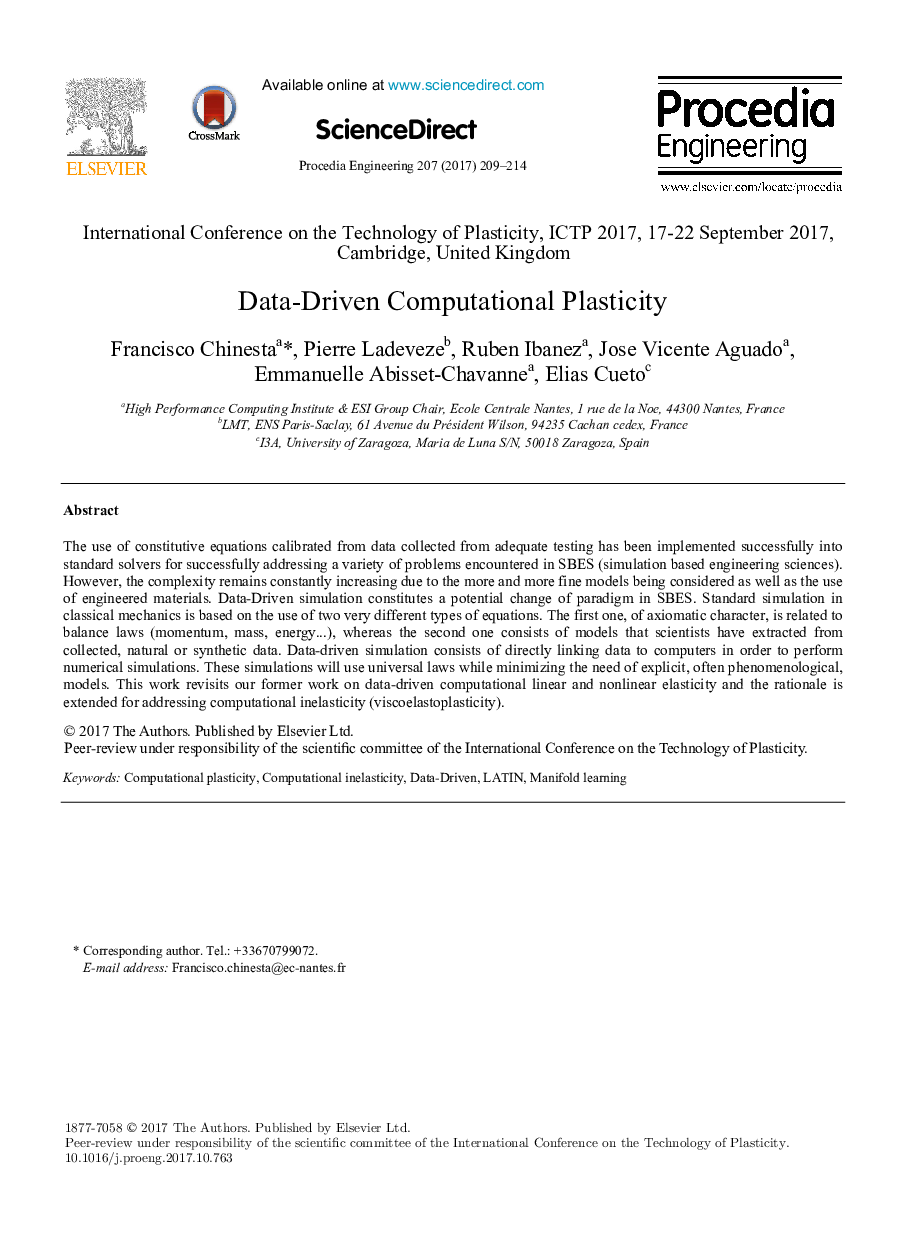| Article ID | Journal | Published Year | Pages | File Type |
|---|---|---|---|---|
| 7227105 | Procedia Engineering | 2017 | 6 Pages |
Abstract
The use of constitutive equations calibrated from data collected from adequate testing has been implemented successfully into standard solvers for successfully addressing a variety of problems encountered in SBES (simulation based engineering sciences). However, the complexity remains constantly increasing due to the more and more fine models being considered as well as the use of engineered materials. Data-Driven simulation constitutes a potential change of paradigm in SBES. Standard simulation in classical mechanics is based on the use of two very different types of equations. The first one, of axiomatic character, is related to balance laws (momentum, mass, energy...), whereas the second one consists of models that scientists have extracted from collected, natural or synthetic data. Data-driven simulation consists of directly linking data to computers in order to perform numerical simulations. These simulations will use universal laws while minimizing the need of explicit, often phenomenological, models. This work revisits our former work on data-driven computational linear and nonlinear elasticity and the rationale is extended for addressing computational inelasticity (viscoelastoplasticity).
Related Topics
Physical Sciences and Engineering
Engineering
Engineering (General)
Authors
Francisco Chinesta, Pierre Ladeveze, Ruben Ibanez, Jose Vicente Aguado, Emmanuelle Abisset-Chavanne, Elias Cueto,
